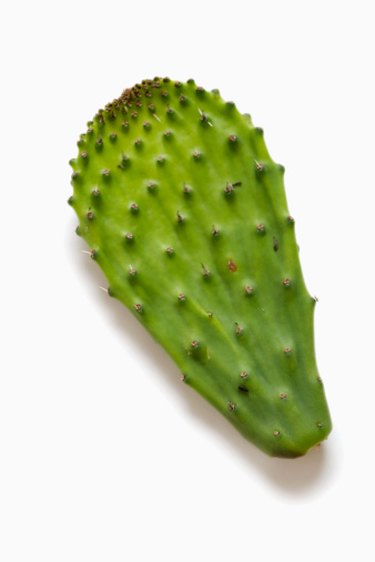
The cactus is a tough, formidable plant evolved to withstand the high temperatures and arid climates of the desert. Its prickly thorns ward off potential predators, including humans, but some species of cactus can actually be consumed. They produce food in both the fruit and the edible green pads of the cactus.
Orchid Cactus
Video of the Day
The orchid cactus, alternately called the Epiphyllum hybrid cactus, bears bright red fruit and flowers. The fruit is smooth and about the size of a closed fist, with small, kiwi-like seeds. Though the fruit of the orchid cactus can be consumed, it has very little flavor, and some people may find the taste unpalatable.
Video of the Day
Opuntia Cactus
The genus Opuntia produces "Indian figs," as its fruit is commonly called. The fruit ripens in September, turning red on the outside and orange on the inside. They can be picked and eaten fresh; the seeds are also edible. In addition, this kind of cactus fruit is useful for making preserves, jams and even a kind of liqueur.
Nopales
Nopales cactus has edible pads that are thick, green and moist underneath their tough exterior. Their flavor is reminiscent of okra or green beans, and they're widely used as a staple vegetable in parts of Mexico. The pads are harvested early in their development stage, when they are more tender and flavorful. Nopales are eaten raw, cooked as a side dish or as an ingredient in soups.
Pricky Pear Cactus
The prickly pear cactus, as its name suggests, bears a kind of fruit called "prickly pears." The fruit is several inches in length, with a tough skin and an avocado shape. Cut away the thick, prickly skin to get to the brightly colored yellow or red fruit, which is juicy and pulpy. You can also eat the crunchy seeds. Prickly pears can be harvested all year but are best between spring and late autumn.